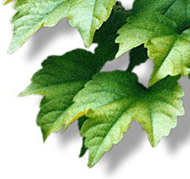

Rattle Snake
Genus Crotalus
 Description:
Description:
Rattlesnakes come in 16 distinct varieties. There are numerous subspecies and color variations, but they are all positively identified by the jointed rattles on the tail. While most of the rattlers are concentrated in the southwestern United States, they extend north, east and south in diminishing numbers and varieties, so that every contiguous state has one or more varieties.
Distribution:
The Pacific Rattlesnake is found throughout a variety of places in the California, from sea level on the Pacific Ocean, the inland prairies and desert areas, to the mountains at elevations of more than 10,000 feet.
Along the coast north of southern California, the Pacific Rattlesnake has the territory all to itself. In Southern California the Pacific rattler overlaps the range of several other species and subspecies, except that of the large Western Diamondback rattler along the Colorado River and the southeastern California deserts.
From Lake Tahoe north, on the east side of the Sierra, you might see the Great Basin rattler; from Tahoe south through Death Valley, the Sidewinder (Crotalus cerastes) and Panamint rattlers; along the Colorado River, the Western Diamondback (Crotalus atrox); in the southwestern area, the Red Diamondback (Crotalus ruber) and Speckled (Crotalus mitchelli) rattlers; and in the Mojave Desert, both the Mojave Rattlesnake and the Sidewinder.
Habits
In ideal habitats where there is a constant, abundant supply of small rodents, the Pacific rattler sometimes attains a length of 5 feet, but the average adult size is between 3 and 4 feet. It is more slender than the heavy-bodied diamondbacks of the south and eastern United States. The color of the Pacific and pattern of its markings are varied, ranging from brown to grayish or greenish tones with large blotches of lighter hues along its back.
In the northern areas of their range and at higher elevations, snakes congregate in the fall at crevices in rocky ledges to hibernate for the winter, returning to these places annually. These spots are known as snake dens.
When temperatures begin to warm in May and early June, snakes come out of hibernation. They remain near the den entrance for a few days, sunning themselves, then make their way to where they will spend the summer. They rarely go more than a mile from their dens. Most snakes are secretive in their summer activities, hunting at night and remaining inactive and out of sight for days at a time during the digestive period after eating a squirrel or small rabbit. Consequently, more snakes are seen in the spring and fall migrations to and from their winter homes.
Life Cycle
Some kinds of snakes lay eggs. In others, including rattlesnakes, eggs are retained in the mother's body until hatched, and the young are born alive. Sometimes the female rattler is killed with the young still in her body, a phenomenon giving rise to the folk tale that she swallows her babies to protect them from danger. The female Pacific rattler may contain from 4 to 25 eggs, from which an average of 9 or 10 hearty young are born live.
Except in the extreme northern part of California, mating occurs in the spring. The young are born between August and October. The newborn Pacific Rattlesnake is about 10 inches long and has a small horny button on the tip of its tail. Rattler babies have venom and short fangs and are dangerous from birth. In fact, they are more pugnacious than the adults. Although unable to make a rattling sound, the youngsters throw themselves into a defensive pose and strike repeatedly when disturbed.
Young rattlers are completely independent of the mother. They remain in the area of their birth for the first 7 to 10 days, until they shed their first baby skin and add their first rattle. The litter then begins to disperse and begin the search for food. Many newborn do not survive the first year, either dying of hunger or being eaten by birds and animals. Even if they survive the first summer, they may perish during the first winter, if they can't find a suitable warm crevice in which to hibernate.
If all goes well, youngsters grow rapidly. Each time they come out of hibernation, they shed their skin, and with each skin shedding (molting) a new rattle appears. During the rapid growth of the first few years, they may molt three times annually. Thus, the number of rattles is not a true indicator of age. Rattles also wear out or break off, so it is unusual to find an adult snake with more than 8 or 10 rattles.



 Description:
Description:




